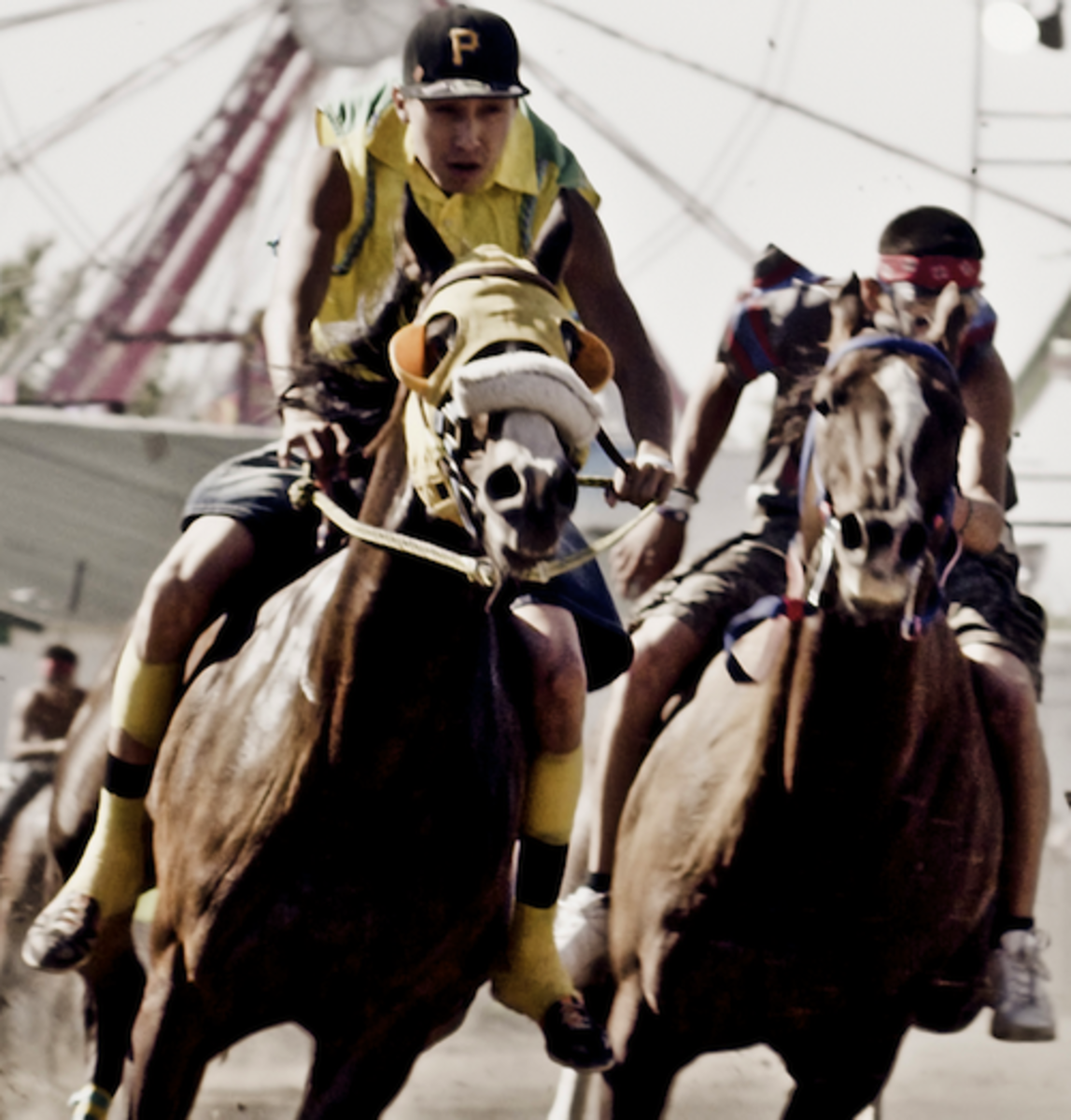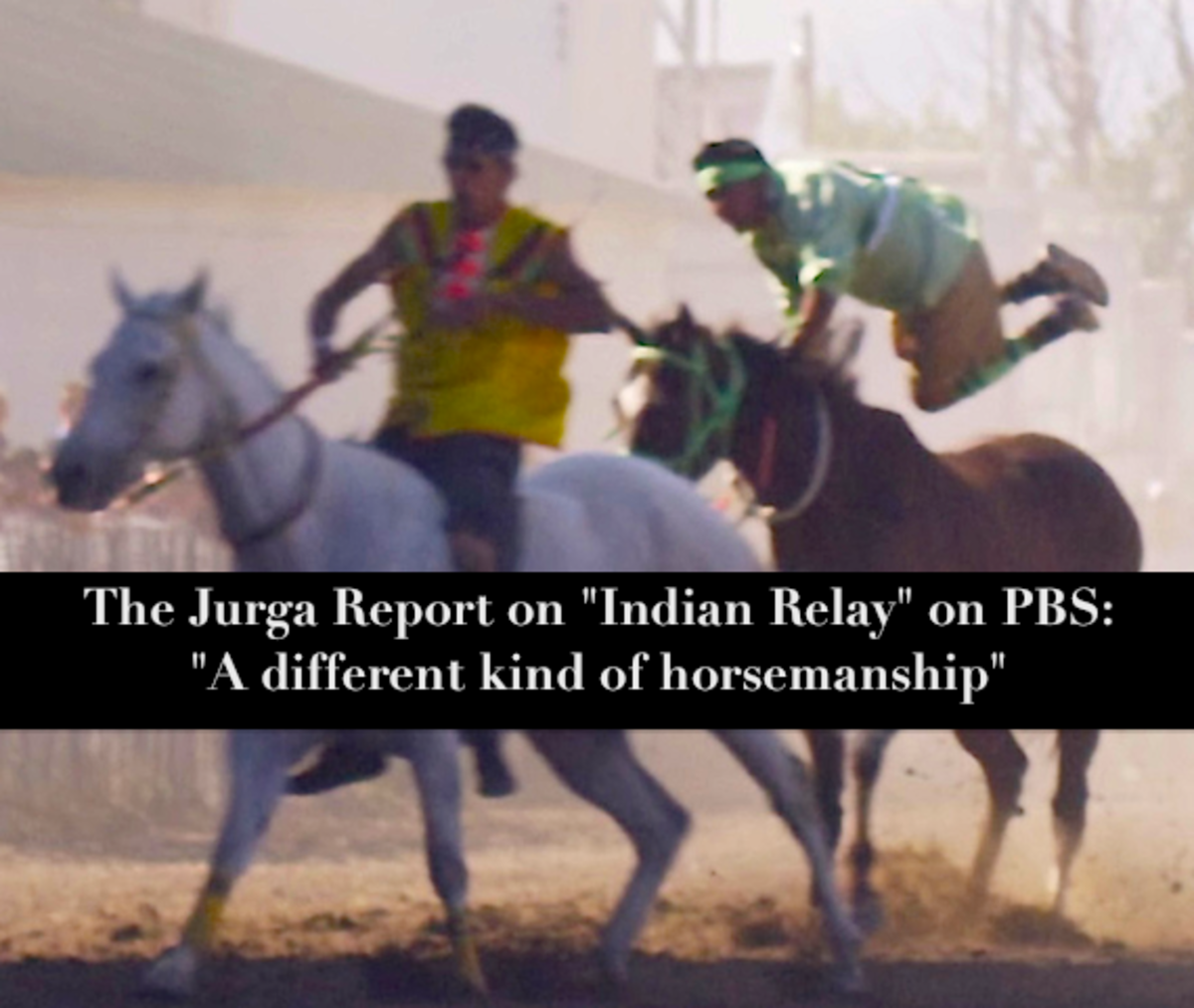[VIDEOSINGLE type=”youtube” keyid=”KfwYa_fjii4″, width=”560″, height=”344″]
I think the last time PBS wandered onto a racetrack, it was for an American Experience documentary on Seabiscuit. It quickly wandered away again.
After all, the people you sit next to in a track kitchen aren’t exactly the same ones you’d find around the immaculate dining room table at Downton Abbey.
Indian Relay is a derivative of horse racing that started as a competition between tribes but is now a public crowd-pleaser at rodeos. A film about the sport is on PBS this week.

So it is all the more surprising that PBS would go so far afield to visit a part of racing culture that is as far from the rarified air of Munnings paintings and Saratoga society as you can get. They went to the outback of American horseracing and then kept going, until they found themselves on the rail of a little-known Thoroughbred racing circuit known as “Indian Relay”.
At these tracks, no one’s arguing about whether or not to use steroids, or what Lasix can and cannot do. No one is checking the length of toe grabs or verifying lip tattoos. There’s no winner’s circle, no program, no morning odds.
[VIDEOSINGLE type=”youtube” keyid=”-c7IQsn2BjQ”, width=”560″, height=”344″]
We don’t know if the horses have names but they do have war paint. The riders’ and team members’ names seem to be a combination of tribal names and code. No one is exactly identified in the film, perhaps with good reason. These races make the controversial chuckwagon races held at the Calgary Stampede look tame.
What it’s all about: one racetrack. Four people. Three horses. A designated rider (bareback, of course) leaps from horse to horse after each lap of the track. There’s a “mugger” who catches the horse at the end of the lap as the rider vaults off, and two “holders” steady the horse for the next lap as the rider leaps onto his back from the ground. And they’re off.
We don’t know if the horses have names
but they do have war paint.
If you hug the rail, you have to cross the track–and the paths of the other horses–to get to your next horse. If you’re galloping too fast, your horse won’t be able to stop. If you can’t get on your horse’s bare back from the ground on the first try, you lose precious seconds and run the risk of your horse not standing for a second attempt.
This is a different kind of horsemanship. The teams are competing not just for a belt buckle and a check, but for their tribal honor and their reputations as horsemen. Indian relay is to equitation what rap or hip hop is to classical music. You might not get it. You might not like it. But you might see, hear or feel something that makes you feel like you know these guys.
[VIDEOSINGLE type=”youtube” keyid=”5j42Iq9-qPY”, width=”560″, height=”344″]
Video: unedited ?Indian Relay at the Pendleton Roundup on Oregon
Indian relay racing is enjoying a resurgence in the west, and is now seen at big rodeos like the Pendleton Roundup, where there’s even a ladies division.
Perhaps I should have been disgusted by the film and the danger that the horses face with each lap. Maybe this film will make horse advocates rise up and try to stop it.
But it could also have the reverse effect, and fuel the spreading popularity of Indian relays. And as the popularity grows, so will the pressure on the horses, and so will the pressure to put on a death-defying show with plenty of riderless horses and young bodies lying motionless on the track.
The stands are full of people who have paid to see some action. If Indian Relay races don’t deliver, the stands won’t be full and you won’t hear about it again.

By the time this film was aired on PBS as part of Native American Heritage Month, Indian Relays may have crossed the line from being a specialty racing with roots in Native American horsemanship to being a crowd-pleasing grandstand show like Monster Trucks and Demolition Derbies.
Still, a team member assures us, ?it’s all the horse. They do it for you.?They put on the show.? The filmmaker stresses that the teams love their horses, care for them, train long hours, and have a cultural connection that Churchill Downs and Saratoga can’t begin to match.
A good filmmaker like Charles Nye of Dye Works Films?can convince you of the message in the film. That’s how propaganda works. But it’s also how filmmakers get drawn into projects like this. They see a story and want to tell the world.
For me, after the film was over I could still see those riders sitting up straight on the thin backs of those galloping Thoroughbreds, as if they were standing still. Their balance was–and is–amazing. They wrap their legs in vet-wrap tape for lower-leg grip. They’re not holding on for dear life, they’re riding. No one’s ever had to shout “More leg!” to these guys.
Indian Relay is something to see.
Indian Relay is part of a series shown on Independent Lens on PBS this week; the film follows the riders for nine months as they compete toward the championship. Check your local listings; if you missed it, Indian Relay is streaming on the PBS website this month, as well.
To learn more:
Professional Indian Horse Racing Association
Indian Relay Racing: Heritage, horsemanship, and hard knocks collide in the thrilling sport of Indian Relay Racing by Jack McNeel in American Cowboy magazine (online)
Indian Relays: Horse racing with pit stops by Matt Joyce in the Casper (WY) Star-Tribune








